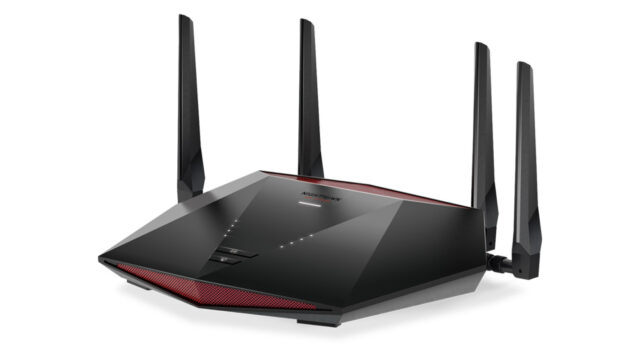The more we depend on technology and entrust it with more of our sensitive data, the more sophisticated and varied the methods that hackers create for obtaining that data. Trojan Horses are only one of the various forms of malicious software that may be found on the internet. However, there is more than one variation of this malicious software. There are several distinct kinds of Trojan Horses, and each one is intended for a certain function. You should be aware of the most prevalent types of Trojan horses, so let’s have a look at those.

What is a Trojan Horse?
Before we get into the various forms that Trojan Horses might take, let’s take a moment to define what they are.
The ancient Greek epic known as the Odyssey, which was penned by Homer, is where the phrase “Trojan Horse” first appeared. In the narrative, the city of Troy is presented with a great wooden horse as a gift; however, the citizens of Troy are unaware that warriors have been concealed within the horse. The army is able to invade the city after the horse is inside the city limits.
A program known as a Trojan Horse operates in a manner that is analogous to the original Trojan Horse, in that it conceals itself behind the software that appears to be safe. You might, for instance, download an app under the impression that it can be relied upon, but the program’s developer might have secretly incorporated a Trojan inside the software. After the malware has infected your device, it is possible for a number of illegal acts to be carried out, such as remote control, the theft of data, and the monitoring of activity.
Types of Trojan Horses
It is essential to have an understanding of the many types of Trojan Horses in order to improve the efficacy of the protection you provide for yourself.
-
Backdoor Trojans
When discussing computer security, the word “backdoor” refers to a way that malicious software might be utilized to gain access to a computer system. Therefore, rather than accessing the device or server via the legal and authenticated approach (the front door), the attacker will make use of harmful applications in order to sneak in through another route (the back door).
So, backdoor Trojans are pieces of software that allow for unauthorized access to be gained from a distant place. They do this by providing an attacker with an additional entry point into the system. An attacker can use this to carry out remote functions, steal data, or spy on a victim’s activity by monitoring what they do.
-
Downloader Trojans
Downloader Trojans can only function properly when they are connected to the internet. After the Trojan has infected a device, it will remain dormant until it is able to establish an internet connection. At this time, it will be able to download other harmful programs to assist the cybercriminal in their attack. This type of Trojan can also cause malicious software to be launched on the device it has infected. They serve as a kind of initial stage in the attack, providing the hacker with a solid purchase on the target they are going after.
-
Fake Antivirus Trojans
Trojans that pose as antivirus software are sometimes referred to by their deceptive term, phony antivirus Trojans. In this way, the victim will have faith in the program and believe that it is keeping them secure, despite the fact that the reality is the complete reverse of what they believe. The malware may appear to be performing antivirus scans in order to fool you, but its true purpose is to exploit your system. This type of software is designed to induce fear in the user in the hope that they would pay for more defensive measures, so depriving them of their money.
This kind of method is especially helpful with folks who have less experience with technology, such as older people.
-
DDoS Trojans
You may have figured correctly that DDoS Trojans are related to DDoS attacks, which stand for distributed denial-of-service attacks. This entails sending an overwhelming number of queries to a server in an effort to trigger technical troubles. When there are too many requests being sent to a server, the server may become unresponsive.
The power to carry out DDoS assaults is granted to the threat actor by the use of DDoS Trojans. A distributed denial of service attack can be launched against a specific IP address by infecting several devices with a program known as a Trojan Horse and then controlling those infected machines remotely. The infected devices will send an overwhelming number of requests to the IP address, which may cause the system to become unresponsive or completely freeze up.
The term “botnet” refers to what happens when a network of computers, smartphones, and other normally innocuous devices gets co-opted for malicious purposes. In a nutshell, these machines are known as “zombie” devices because the attacker can control how they operate. In the world of cybercrime, botnets are very common since they assist criminal actors in more successfully spreading malware.
-
Rootkit Trojan
Rootkits are pieces of software that are deployed in administrative settings to allow for remote access. This type of remote access is frequently unlawful and can serve as a point of entry for an online attack. When an attacker has administrative access to an infected device through the use of a rootkit Trojan, they have the ability to exploit the device in a variety of different ways. A cybercriminal, for instance, might steal confidential login information, execute another harmful program, or eavesdrop on private conversations.
-
Banking Trojans
Trojans that target banks concentrate on stealing banking information. Because they allow an attacker to have immediate access to a victim’s assets, banking credentials are a type of information that is extremely desirable in the world of cybercrime. This kind of material is very popular in markets on the dark web, where other people who engage in illegal activity would pay hackers to gain access to the information that the hackers have stolen. The websites of financial institutions are frequently the targets of banking Trojans.
When an attacker successfully downloads a banking Trojan onto a victim’s device, they are then in a position to steal the victim’s banking credentials. In addition to login credentials, banking Trojans can also assist an attacker to circumvent barriers requiring two-factor authentication, which is a security feature that a lot of people use to protect their online bank accounts.
-
Spy Trojans
Spy Snooping on the activities of a victim is one of the primary concerns of Trojans. After the targeted device has been infected by the Trojan, the adversary will be able to carry out remote spying on the victim using spyware. Their keystrokes, the activity within applications, their habits online, and possibly even other behaviors could be tracked in order to steal data. For instance, an attacker can record the victim’s keystrokes on an infected device in order to figure out what the victim’s login credentials are when the victim types them in on the device.
Another option is for the operator of a spy Trojan to listen in on a private conversation that is taking place online in order to obtain valuable information that they should not have access to. It’s possible that they want to gather intel on a government agency or even a financial institution.
-
Game-Thief Trojans
Game-thief The employment of Trojans, often known as gaming Trojans, allows for the theft of confidential information via online gaming accounts. The fact that there are millions of online gaming accounts available nowadays provides a market niche for data theft carried out by cybercriminals. After the Trojan gains access to valuable information, it will send a message to its attacker containing that information. A Steam account, for instance, could be compromised in order to gain access to sensitive payment information or to steal virtual goods.
Trojans pose a threat to the device we use.
Because they are so adaptable, Trojan Horses put people who use the internet in danger in a variety of different ways. Because of this, it can be challenging to avoid being infected by them. However, if you are aware of the potential dangers and take additional safety measures whenever you use any of your devices, you will be able to avoid the dangers posed by Trojan Horses and keep both yourself and your data safe.
Would you like to read more about What is a Trojan Horse-related articles? If so, we invite you to take a look at our other tech topics before you leave!









